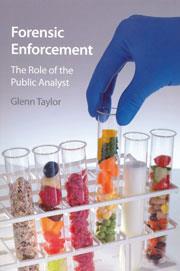Forensic enforcement: the role of the public analyst
Forensic enforcement: the role of the public analyst
Glenn Taylor
Cambridge, UK: RSC Publishing 2010 | 91pp|?25.99 (SB)
ISBN 9781847558718
Reviewed by D Thorburn Burns

This is a most timely book as it celebrates the 150th anniversary of the passing of the Act for preventing adulteration of articles of food and drink in 1860 which established the post of public analyst. Then, as now, a major role of the holders of these posts concerns the protection the public from food fraud and adulteration. However, their forensic analytical skills as expert witnesses also apply to many other materials additional to food and drink about which the courts and legal profession require guidance.
The text starts with a brief history of adulteration and falsifications from biblical times. The account of more recent and current times is based on material from retired and practising public analysts. The tales that unfold give numerous fascinating accounts from sampling to analysis, data interpretation and of the arts of presentation of complex scientific evidence in court.
A number of important and significant cases are outlined. For example, whilst the duty of every expert witness is to the court, no matter which side has commissioned their work, it is rare for a single expert to give evidence both for the prosecution and defence in a criminal trial, as happened in a case of alleged industrial sabotage with a food allergen. The case on insect contaminated dates summarises some nice exchanges between an astute public analyst and a barrister, which exemplifies the important principle, ’where there is no standard; legal, statute, or whatever, it is the duty of the public analyst to put a standard to the court for the court to consider’. The book illustrates the range of analytical methodologies, from optical microscopy to DNA technologies, now available for the examination of food and drink and makes an excellent case for enhanced investment in the sector.
The book should be essential reading for all trading standards officers and their trainees, the chief executives of all local and regional authorities and Members of Parliament. Practising chemists will enjoy this book as well as get a gentle introduction to the fascinations of modern analytical science.












No comments yet